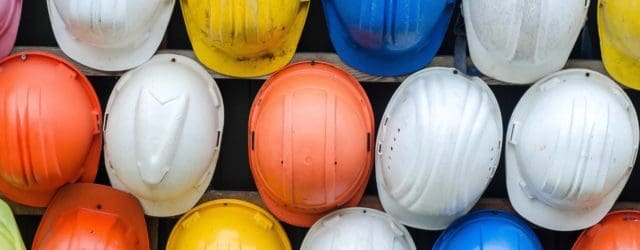The Health & Safety Authority Annual Report 2020 – a summary for the construction sector
January 2022INTRODUCTION
In 2021 the Health & Safety Authority (“HSA”) published its annual report for 2020 (“the Report”) to Damien English TD, Minister of State for Business, Employment and Retail. The HSA has also published its Annual Review of Workplace Injuries, Illness and Fatalities 2019-2020 (“the Review”).
The HSA is the Irish statutory body responsible for ensuring protection from work-related injury and ill health. This is the second annual report under the HSA’s strategy statement for 2019-2021 which takes consideration of new technologies and work practices and of course, Brexit. As the COVID-19 pandemic reshaped the way we work the HSA modified its Programme of Work to meet heightened demand for market surveillance and occupational health and safety.
As always, the report serves as a timely reminder for those in the construction industry of the importance of compliance with health and safety rules and regulations as the potential consequences of a breach can be serious and tragically are often fatal. The following points are worthy of note:
COVID-19
The HSA worked loosely with various Government departments and agencies providing a lead role in the co-ordination of a cross-Government response to the COVID-19 pandemic by ensuring strict compliance with Government health and safety protocol across the construction sector, as well as other sectors. As part of this protocol, the HSA conducted 5,416 COVID-19 inspections across various sectors between 18 May and 31 December 2020. The HSA also provided training across sectors to combat COVID-19. The HSA contributed towards updating various codes of practice and work safety protocols in line with Government COVID-19 guidelines.
WORK RELATED FATALITIES
In 2020, 53 people were killed in work-related accidents compared with 47 in 2019. Over half of the lives lost were those of self-employed persons and 28.3% of the 53 fatalities occurred in the construction sector. Despite the temporary closure of the construction sector during the first lockdown period, there was an increase in fatalities in the construction sector with 14 individuals sadly losing their lives, the highest figure in over ten years. Whilst there had been a steady decline in work related fatalities in the construction industry over recent years there was an increase in fatalities in 2020 and it is clear that significant scope remains open to improve compliance with health and safety rules and regulations to reduce the number of work-related fatalities going forward.
NON-FATAL INJURIES
The number of non-fatal injuries fell considerably in 2020. Back injuries were the most commonly sustained non-fatal injury in the workplace generally accounting for some 20% of injuries sustained. Needless to say, the temporary closure of many workplaces and sectors undoubtedly contributed to the reduction in non-fatal injuries reported to the HSA last year. Injuries sustained resulting from manual handling have been the most common cause of non-fatal injury in the workplace since 2016. A total of 7,417 non-fatal incidents were reported to the HSA in 2020, which is a 20% reduction on the 9,358 non-fatal incidents reported in 2019.
INSPECTIONS, INVESTIGATIONS AND STATISTICS
In 2020, the HSA completed over 10,000 inspections resulting in 13 prosecutions and fines in the amount of €1,327,000.
“In construction, inspections concentrated on compliance with the key provisions of the Construction Regulations as well as the specific hazards arising from working from height and vehicles/machinery.”[1] The HSA conducted an intensive inspection campaign in the construction sector. 935 chemical products were accessed for compliance including construction related products.
Construction sector by numbers:
In 2020 the HSA conducted 355 investigations and 3,641 inspections, 1,255 of which were carried out under the HSA’s working at height campaign. Levels of compliance on items reviewed during these inspections were:
- 87% – Safe use of ladders
- 94% – Engineering controls to capture dust
- 74% – Safe work on fragile roofs
- 88% – Earth moving equipment fitted with auxiliary reversing aids
- 91% – Traffic management plans implemented
- 92% – Compliance with requirements in relation to construction management
OCCUPATIONAL HEALTH
1,160 investigations were carried out in relation to accidents, 356 of which were in the construction sector. Fixed payment notices, prohibition and improvement notices were issued on foot of 538 of these investigations and inspections. The HSA report displays a focus on occupational health risks in relation to chemicals and chemical products associated with the construction sector being the subject of investigation and inspection. Further, the HSA, through its Workplace Contract Unit, made available a helpdesk service to handle complaints in relation to COVID-19.
INDUSTRY SUPPORT
Members of the construction industry continue to utilise the BeSMART online portal for small business support and there has been a strong increase in use of the BeSMART platform with over 70,000 registrations recorded.
The HSA also provided the Department of Enterprise, Trade and Employment with advices in relation to the Safety, Health and Welfare at Work (Construction) (Amendment) Regulations 2020 (S.I. 102 of 2020). The HSA also published a Construction Site Traffic Management Plan (CSTMP).
CONCLUSION
The HSA annual report serves as a timely reminder that the construction sector must continue to prioritise health and safety, especially with regard to reducing the number of work-related fatalities within the construction industry.
[1] Health and Safety Authority, Annual Report 2020, – https://www.hsa.ie/eng/Publications_and_Forms/Publications/Latest_Publications/hsa_annual_report_2020.98777.shortcut.html
Download PDF








